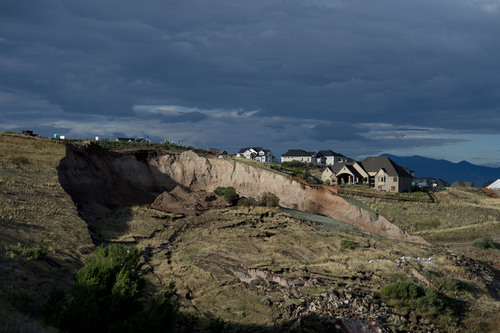This is an archived article that was published on sltrib.com in 2014, and information in the article may be outdated. It is provided only for personal research purposes and may not be reprinted.
People who like to build houses on the sides of mountains are like people who like to keep tigers as domestic pets. They are beautiful and, if anything, the inherent danger just makes them more so.
But, while government's ability to protect the would-be Siegfrieds and Roys among us from themselves is limited, state and local officials should be doing more to make sure that people don't, er, sink their life savings into a property that is likely to collapse into a soggy heap of rubble.
The history of the Wasatch Front is littered with cases where homes, apartments and other buildings slid down an embankment, or were destroyed by a landslide of the dirt that had been further up the hill.
The most recent happened just last week, as one home in the Eagleridge neighborhood of North Salt Lake was destroyed, and other properties severely damaged or evacuated, by a landslide.
Even though the neighborhood's developers — Sky Properties — built the homes and other buildings on the side of a hill that had once been a gravel quarry, a hill composed of a now-obviously unstable mix of clay, silt and sand, those developers hired some experts to present a report to the city of North Salt Lake finding the area suitable for building. The city, unable or unwilling to do its own research, took the developer's word for it.
In hindsight, it seems that accepting a safety certification from a firm that was in the employ of developers who wanted a particular finding amounts to municipal malpractice.
Local governments have the duty of laying out zoning laws and development standards designed to, among other things, ensure that people aren't buying and selling homes that are firetraps or otherwise a danger to their occupants and to their neighbors.
North Salt Lake is not the only Utah city that should learn to be more proactive, commissioning truly independent examinations of hillsides and mountaintops so that, long before someone walks in with a building permit application, relevant officials know what areas are safe, and what constitutes the definition of "safe enough," for the disruptive activities associated with homebuilding.
And, although a body so heavily influenced by the real estate and contractor sectors may be loathe to do it, the Utah Legislature should help cities with expertise, money and, most of all, laws that allow limits on slope-side buildings.
Lest more homeowners get mauled by their own tigers.



